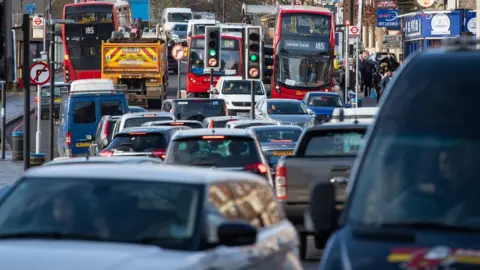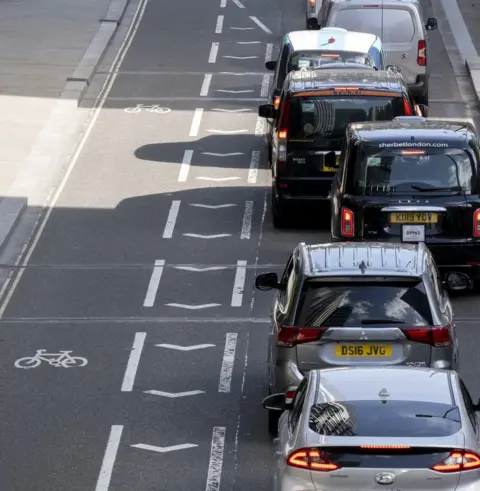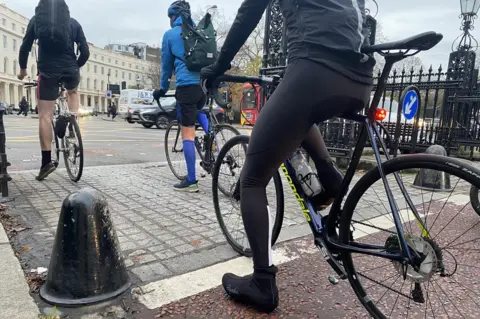London congestion: Capital becomes world’s most congested city
 PA Media
PA MediaLondon has become the world's most congested city, new analysis shows.
Drivers in the capital will lose an average of 148 hours stuck in jams across the whole of 2021, according to traffic information supplier Inrix.
That is just 1% down on pre-coronavirus pandemic levels, a much smaller decline than many other major cities.
Paris was second in the global ranking for most congestion (140 hours lost), followed by Brussels (134), Moscow (108) and New York (102).
Last year, London was ranked only the 16th most congested city.
 Getty Images
Getty ImagesAcross the UK as a whole, drivers will waste an average of 73 hours in traffic this year.
That is up 36 hours from 2020, but down 42 hours compared with pre-Covid 2019.
Rebalancing roads
Globally, traffic and road congestion in 2021 was still below 2019, Inrix's report states. However, the increase from 2020 levels signals a significant economic recovery over the last year.
Inrix operations director Peter Lees said the main reason for London's surge in the traffic jam ranking was its relatively strong economic recovery from the pandemic compared with other global cities.
However, he told the Press Association news agency that the installation of cycle lanes, introduced in London and many other cities last year following the coronavirus outbreak to encourage active travel, had a "negative impact on congestion".
He said: "Use of roads is all about supply and demand.
"If the demand goes up but the road space is being shared with other forms of transport, there's less tarmac effectively for the cars to be on, which then has an impact on the speeds on the road and therefore congestion."
Duncan Dollimore, head of campaigns at charity Cycling UK, disputed the suggestion that cycle lanes are responsible for added congestion.

He said: "It's incredibly simplistic for Inrix to suggest that the use of road is all about supply and demand, without considering how efficiently that road space is used.
"On Blackfriars Bridge, cycle lanes take up 20% of the road space but move 70% of the people across it at peak times, with cycle lanes across London moving more people more efficiently in less space.
"Inrix are focussed on the tarmac available for cars, when the question should be how we use and allocate that space better, changing travel behaviours and reducing congestion in the process", he added.
Glynn Barton, Transport for London's (TfL) director of network management, said: "London's economy has opened up from coronavirus earlier than in many comparable cities around the globe, which makes direct comparisons difficult.
"This report shows that congestion is lower in London than in 2019 and our investment in walking and cycling has made it safer and easier to choose sustainable ways of travelling, but TfL is determined to work with the mayor to do everything possible to make London a greener, less congested city."
Clarification 21 December 2021: The headline and copy have been amended to better reflect the range of factors impacting congestion in London
